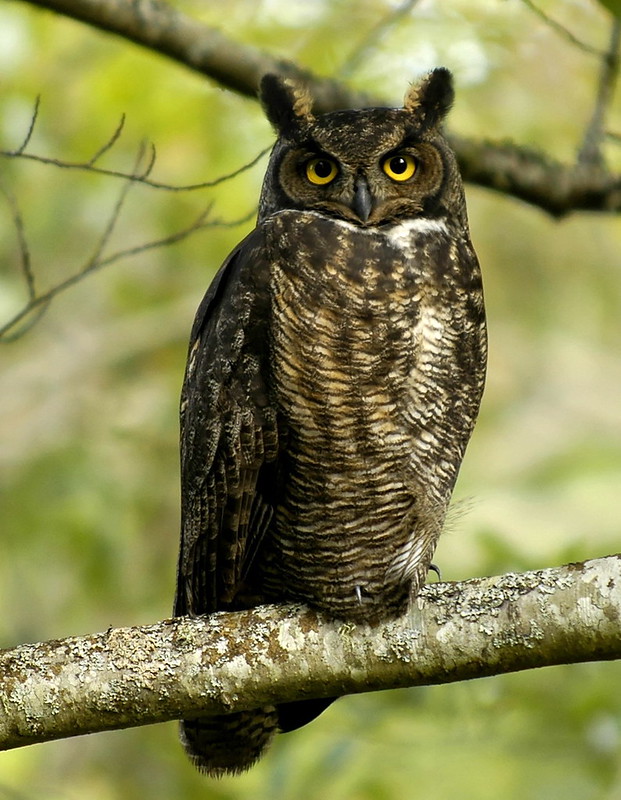Yesterday morning, just back from the earliest morning dog walk, my partner said: “We interrupted the food chain in action.” Walking toward the gate, they saw a large owl fly off from the ground into a nearby tree. When they got closer, they could see a dead rabbit in front of the woodshed. My partner deals with many practical things but moving dead animals is not one of them, so it was my job to dispose of the rabbit. When I went out to do so, a few hours later, the rabbit was in a different spot by the woodshed. The body seemed untouched but the head had been chewed off.
It turns out this is not an uncommon pattern for Great Horned Owls, which we know live around us, having heard their recognizable hoo, hoo-hoo, hoo, hoo calls many nights. Back in 2008, Brad Bartkus reported having seen a Great Horned Owl, one very early morning in his yard in Wisconsin, sitting on the ground on top of a dead rabbit. When he went to check it out, he found a decapitated rabbit with the body intact. Someone commented in the discussion thread: “Well fed owls will often eat only the heads of their prey.” Since there are plenty of rabbits, rats, and mice on the island, I would indeed expect the local owls to be quite well fed.

“Great Horned Owl” by brendan.lally….away is licensed under CC BY 2.0 .
Retired wildlife officer Bill Bower writes: “The great-horned owl’s signature method when dealing with large prey is to behead its victim and take only the head to its nest or eating perch.”1 The owls use this method not only with rabbits, but also with other birds: “Decapitated birds are characteristic of Great Horned Owl kills.”2

“Great Horned Owl Kill” by USFWS Mountain Prairie is marked with Public Domain Mark 1.0 .
Like the deer I wrote about in an earlier blogpost, rabbits are not native to Salt Spring Island and continue to do damage to farms, gardens, and nurseries. So, while the appearance of headless bunnies might inspire horror in some, or speculation about “evil intentions”3, as a gardener, I appreciate the Great Horned Owls keeping the rabbit population in check.
- Bill Bower, “Reflections in Nature,” The Canton Independent Sentinel, August 13, 2015.
- Francesca J. Cuthbert and Mei-Yao C. Louis, The Forster’s Tern in Minnesota: Status, Distribution, and Reproductive Success (Division of Ecological Services, Minnesota Department of Natural Resources, 1986), 17.
- Carola Vyhnak, “Headless Bunny Find Blamed on Wild Predators,” Toronto Star, September 28, 2011.
